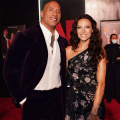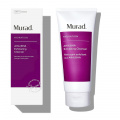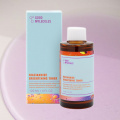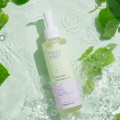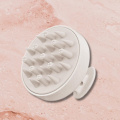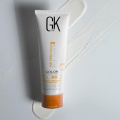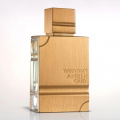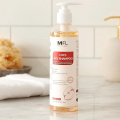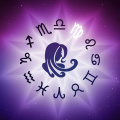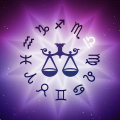Know How to Determine Your Hair Type Before Its Care
To ensure the right hair care, know how to determine your hair type. Otherwise, you may never harp on the right ways to control hair damage and remedies.
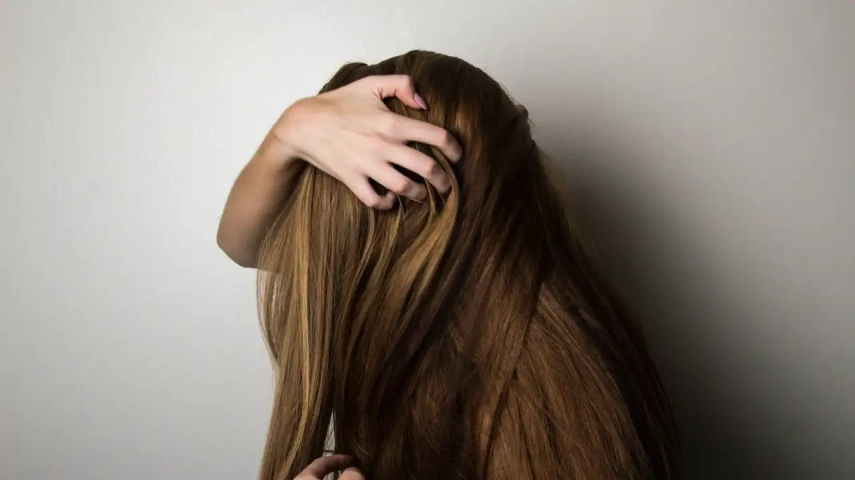
Flawless skin and a healthy mane have no substitute; they outshine every exotic outfit and trend. Hair issues are pretty common for us, isn’t it? However, often the solutions don’t work out in our favor and that might be bothering you as well. Do you wonder why? Maybe they aren’t for you or your hair type. Do you know your hair type? Do you know how to determine your hair type?
If you have been wondering to know “What hair type do I have?” then you just landed on the right page. Correct information can save you from several unwanted hazards like wrong hair treatment without knowing the correct hair type. We got that covered for you!
Know Your Hair Texture
According to scientists, the structure of hair follicles is responsible for hair texture (5). There are 4 specific types of hair texture – straight, wavy, curly and coily, and their respective sub-types.
How Straight Is Your Hair?
Knowing the degree of your hair straightness is a crucial way to know how to know your hair type. We know hair as straight or curvy but when you go into finer details and better understanding, you will discover the different types of straight hair. There are 3 types of straight hair – type 1A, 1B and 1C.
Straight Hair Type 1A
You may have noticed people with natural hair that looks as if they have been smoothened. They are perfectly straight and smooth or you may say that they have a thin texture (2).
Straight Hair Type 1B
This particular type of hair is not perfectly straight; may have some bends along the length which pushes it to the second category (2).
Straight Hair Type 1C
This type of straight hair isn’t fine or smooth like the first two types (2). It is straight but has a coarse texture.

Is Your Hair Wavy?
Hair with prominent curves looks great and some are blessed with such a texture. It resembles waves and from there, they are believed to have earned the name. There are 3 different types of wavy hair – 2A, 2B and 2C.
Wavy Hair Type 2A
Hair strands that are wavy and fine are recognized as type 2A wavy hair (8). Their appearance is elegant, especially when they are in optimal health. However, since they are fine or thinner in nature it might be difficult to hide low hair density.
Wavy Hair Type 2B
The waves of the shafts are more prominent as the shape of an ‘S’ (8) and strands appear to be slightly thicker than the previous type.
Wavy Hair Type 2C
The ‘S’ shape of the hair strands is well-defined in this type of wavy hair (8). There’s no other prominent difference between this type and the other two types.
How Curly Is Your Hair?
Curls are attractive; no doubt about it and if you have natural curls, consider yourself blessed. If the hair follicles are curvy then the strands too become curly; that’s the reason behind curly hair (5). There are 3 types of curly hair, which one do you have?
Curly Hair Type 3A
The wavy curves of hair strands are sharper than wavy hair. There is a considerable gap between the two curves in this type of curly hair; they are loose curls (2).
Curly Hair Type 3B
This type of curly hair is characterized by typical springy curls and the curls are tighter than the previous type (2). They look bouncy; the bounce is more prominent in healthier curls.
Curly Hair Type 3C
The ‘S’ shape of the curls looks more like ‘Z’ because the curls are tighter in this type (2). When you stretch the hair strand, it becomes straight and springs back to its original tight curls when released. They are very bouncy.

Do You Have Coily Hair?
We often confuse curly and coily hair, rather we identify both as curly hair. However, curls are different from coils. This hair type has coiled hair strands and depending on their coil intensity they are identified as three different types – 4A, 4B and 4C. When you were wondering about how to determine your hair type, did you know that curly and coily hairs are different?
Coily Hair Type 4A
The hair strands are loosely coiled, are springy enough and look great (2). The coils are defined in this type and demand great care otherwise they may become frizzy in no time. You must avoid such a condition otherwise it may lead to unwanted breakage.
Coily Hair Type 4B
This type of coiled hair has zig-zagging coils (2). The coils are more frequent and thus the density is higher. If you have this type of hair then you must be very careful about your hair health otherwise it may easily become frizzy.
Coily Hair Type 4C
The coils are very tight in these hair strands with high hair density (2). However, such hair has high density and is prone to get frizzier and breakage. Needless to say, such a hair type is a high-maintenance type.
What Is Your Hair Structure?
Hair structure commonly refers to the visible part of the hair. However, when looking for an answer to how to determine your hair type, you need more detail. The hair shaft is the visible part of a hair structure while the hair root remains beneath the scalp. A complete hair structure comprises the shaft and hair root (9). Depending on various physiological conditions there are different types of hair that you were born with.
When you want to treat hair issues you must know these types to find more suitable treatments for them. For instance, coarse hair is thicker and dries than the other 2 types. Thus, the treatment will focus more on moisturizing them, minimizing their frizziness and making them stronger so that they don’t break easily.
Fine
The hair strands of this particular hair type have a smaller diameter and are comparatively smoother. It is easier to manage and care for finer hair but you must ensure they don’t lose its natural moisture.
Medium
Medium hair is slightly thicker than fine hair and they are also not that fragile. It is also a common hair type unless they are damaged by external factors.
Coarse
If you have coarse hair then you do have reasons to worry because they are usually dry and prone to breakage. Typically, coarse hair has a thick and wider diameter. You need to be very careful about your hair care. The shampoos and other hair products that you chose must be free from chemicals. It would rather be wise to use natural or organic hair care materials; especially for this hair type.
How Porous Is Your Hair?
Hair porosity has a crucial role to play in determining your hair health and its type as well. Usually, hair porosity is genetic (16) but since certain external factors are quite intense they also affect hair porosity. In order to know how to determine your hair type, know whether your hair has high porosity, medium or low porosity.
Try taking a hair strand and placing it in a bowl of water. If the strand sinks immediately then you have high porosity. If it sinks to the middle (16) then your hair is moderately porous or has medium porosity and if it floats then you have low porosity.
High Porosity
If you have tested you may already know whether you have porous hair or not. Porous hair is known to absorb moisture easily and quickly (16). What you need to worry about is losing moisture because hair with high porosity also loses moisture that quickly.
Normal Porosity
Hair with normal porosity is safe because it can hold moisture for a longer time and looks lustrous (16). It doesn’t end there because normal porosity isn’t everlasting. So, if you have such hair then take adequate care to maintain your hair health.
Low Porosity
The absorption capacity of hair with low porosity is low; it cannot absorb any external elements like hair products (16). It’s a good thing because that way the hair remains closed to harmful chemicals. This also means that it will be difficult to moisturize your hair through external sources. Hair products with alkaline ingredients work well in rejuvenating hair cuticles with low porosity. So check their compositions well before getting them.
What Is The Moisture Status In Your Scalp?
You might have often heard that scalp health determines your hair health. That’s true and this is why you must be very careful about your scalp health. So do you know your scalp type? If you have been trying to know how to determine your hair type then try to understand your scalp also.
Dry Scalp
When the pH level of your scalp increases and it secretes lesser sebum then the scalp turns dry (19). Most of us suffer from dandruff issues during the winter season but if you are experiencing an itchy scalp and flakes throughout the year then you have a dry scalp. To fix this take care to reduce the pH level of your scalp through nutrition and natural remedies.
Normal Scalp
It is the best scalp type to have because it has a good balance of pH level and sebum content on the scalp. Thus it’s neither dry nor oily and is considered a clean and healthy scalp (19). The general indication of a normal scalp is that you would be having lustrous and healthy hair and no abnormal hair fall.
Oily Scalp
Overactive sebaceous glands are the primary reason behind such a scalp. If your hair is often greasy, with dandruff buildup on your scalp then be sure that your scalp is oily (19). Excess sebum forms a layer on the hair and its roots, traps dirt and also leads to the formation of dandruff.
How Elastic Is Your Hair?
Hair elasticity is another indicator of its health. It is the property of hair to get back to its original position as soon as the hair is released (20). When the hair is strong it easily exhibits its elasticity and when it isn’t then it breaks. Weaker cuticles leading to brittle hair shafts are prone to damage and thus breakages like this.
High Elasticity
If you can stretch your hair up to 50 per cent of its actual length, without breaking, then you have elastic hair (20). Usually, healthy hair is also highly elastic and easily manageable.
Medium Elasticity
Take a hair strand and stretch it. If you can stretch it to a certain extent but it breaks after that then your hair has medium elasticity (20). Interestingly, most of us have this type of hair elasticity. However, you don’t have reason to worry still because you can work on this. Organic hair masks or hair oils made with natural ingredients are potent enough for improving hair health.
Low Elasticity
Hair that snaps as soon as you start to stretch, is one with low or poor elasticity (20). Such hair is brittle and very prone to breakage. If your hair is one with low elasticity then you really need to focus and commit to its care. It would be best to use organic products or natural ingredients for treating such hair.
How to Style and Care for Your Tresses?
Hair is made of keratin and is meant to shed off as a natural process but unusual hair loss is what you may need to be careful about. Take proper care of your hair and for this, you need to know how to determine your hair type. By now, we hope you know how to do that so here are some essential and proven stylings and hair care tips for your mane.
Hair Styling Tips That You May Like To Bookmark!
Healthy hair has a universal appeal and any style looks great; you can style it anyhow you want. So determining your hair type, taking care of your hair, and ensuring good hair health is the thumb rule for styling. Here are some of the most effective (and general) hair styling tips:
What is Your Hair Type?
As a precaution and to get the best style you may need to know how to determine your hair type and try more accurate styles.
Friendly Hair Products
The attractive and readily transformative products that you often see might not be that good. If you have thoroughly read through the blog till here, you know not every product and every suggestion is for every hair. Most importantly, most of the commonly available hair products have harmful chemical content which you must avoid. It’s best to stick to organic hair products or use natural ingredients.
Appropriate Styling Tools
Using a hairdryer can be tempting and often we overuse it too but that needs to be checked. Or, you may, at least, use a lighter hair drier. Use the right hair brushes, hair ties and others.
The Right Haircut
When done the right way, a haircut makes your hair appear thicker, more voluminous and healthier.
Appropriate Hair Brush
It comes in direct contact with your scalp and hair shafts, and quite frequently. So you must carefully use the right one and it depends on your hair type and when you are using it. Wet hair is comparatively more fragile and hence you must use a hair brush that can easily pass through your hair and do the job. Experts suggest that you must use a paddle brush for regular combing, and a round brush while blow-drying but not a metal one.
Deal With Hair Frizziness
Frizzy hair is brittle and can break easily. The best idea before styling is to minimize frizziness. Sleep on silk-covered pillows, use cooler water for washing hair, keep it clean, and ensure they retain its moisture.
Why should just diamonds be your best friend? The beauty and sheen of healthy hair are unparalleled and an undisputed contender when it comes to good looks. It accentuates your appearance, adds charm to your personality and thus sculpts your individuality as well. Master the art of correction to deal with hair issues. There’s no lack of information, instead there are too many of them and myths too. So, identifying and using the right ones get ignored, often. However, before that ensure you know how to determine your hair type and plan your hair care accordingly.
References:
1. Find Your Hair Type
https://images-eu.ssl-images-amazon.com/images/I/81IHf9at4dS.pdf
2. Hair Typing Systems: How To Define Your Clients’ Textures and What It Needs
https://www.natulique.com/wp-content/uploads/2020/03/hair-type.pdf
3. The Human Hair: From Anatomy to Physiology
https://www.maurolabanca.com/wp-content/uploads/2018/11/Labanca-2014.pdf
4. Chapter 3: The Study of Hair
https://ngl.cengage.com/assets/downloads/forsci_pro0000000541/4827_fun_ch3.pdf
5. Hair Texture
https://medical.23andme.com/wp-content/uploads/2018/02/Hair-Texture.pdf
6. Shape Variability and Classification of Human Hair: A Worldwide Approach
https://hbr.org/2020/10/how-to-thrive-when-everything-feels-terrible
7. The What, Why and How of Curly Hair: A Review
https://royalsocietypublishing.org/doi/pdf/10.1098/rspa.2019.0516
8. Why Is Hair Curly, Wavy, or Straight? Considerations Based on the Biochemicals of the Mature Hair Shaft
9. What Is the Structure of Hair and How Does It Grow?
https://www.ncbi.nlm.nih.gov/books/NBK546248/
10. Hair Anatomy and Material Science
11. The Human Hair: From Anatomy to Physiology
https://www.maurolabanca.com/wp-content/uploads/2018/11/Labanca-2014.pdf
12. Anatomy and Physiology of Hair
https://cdn.intechopen.com/pdfs/53880.pdf
13. The Structure of People’s Hair
https://www.researchgate.net/publication/267736637_The_structure_of_people's_hair
14. The Structure of Human Hair
https://www.sciencedirect.com/science/article/abs/pii/0738081X88900600
15. What is The Structure of Hair and How Does it Grow?
https://www.ncbi.nlm.nih.gov/books/NBK546248/
16. Hair Porosity: Into The Follicle
https://www.cau.edu/curc/Symposium%20Files/3%20-%20Oral%20STEAM.pdf
17. True Porosity Measurement of Hair: A New Way to Study Hair Damage Mechanisms
18. Scalp Condition Impacts Hair Growth and Retention via Oxidative Stress
https://www.ncbi.nlm.nih.gov/pmc/articles/PMC6369642/
19. A Study on Scalp Hair Health and Hair Care Practices Among Malaysian Medical Students
https://www.ncbi.nlm.nih.gov/pmc/articles/PMC5551307/
20. Hair Fiber Characteristics and Methods to Evaluate Hair Physical and Mechanical Properties
https://www.scielo.br/j/bjps/a/XZrwDJrKKXh4Q3JwswHJ4vq/?format=pdf
ALSO READ: 44 Most popular hairstyles for curly hair





 JOIN OUR WHATSAPP CHANNEL
JOIN OUR WHATSAPP CHANNEL